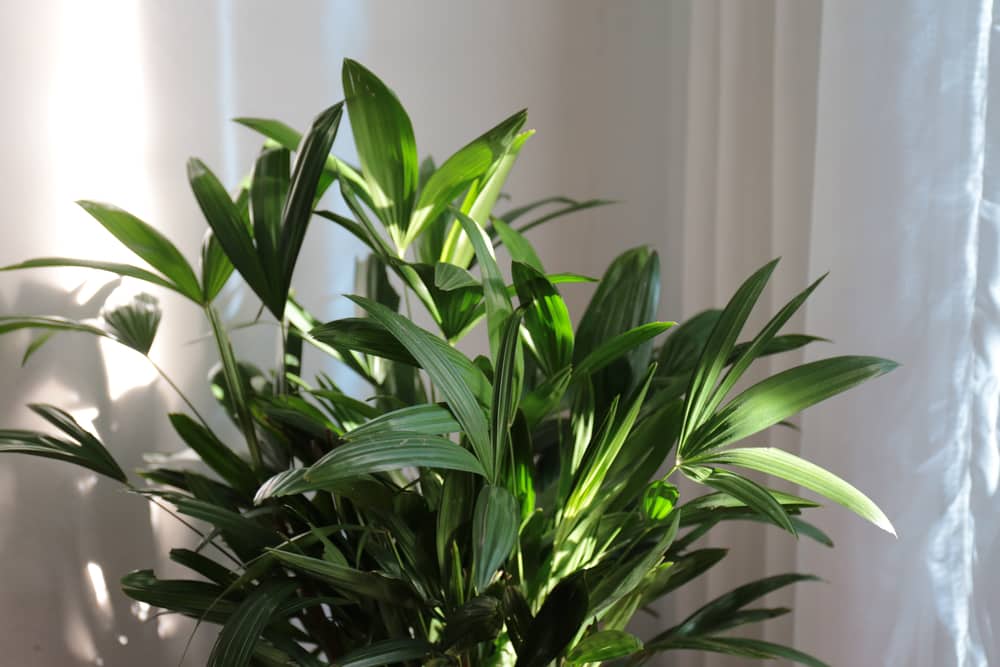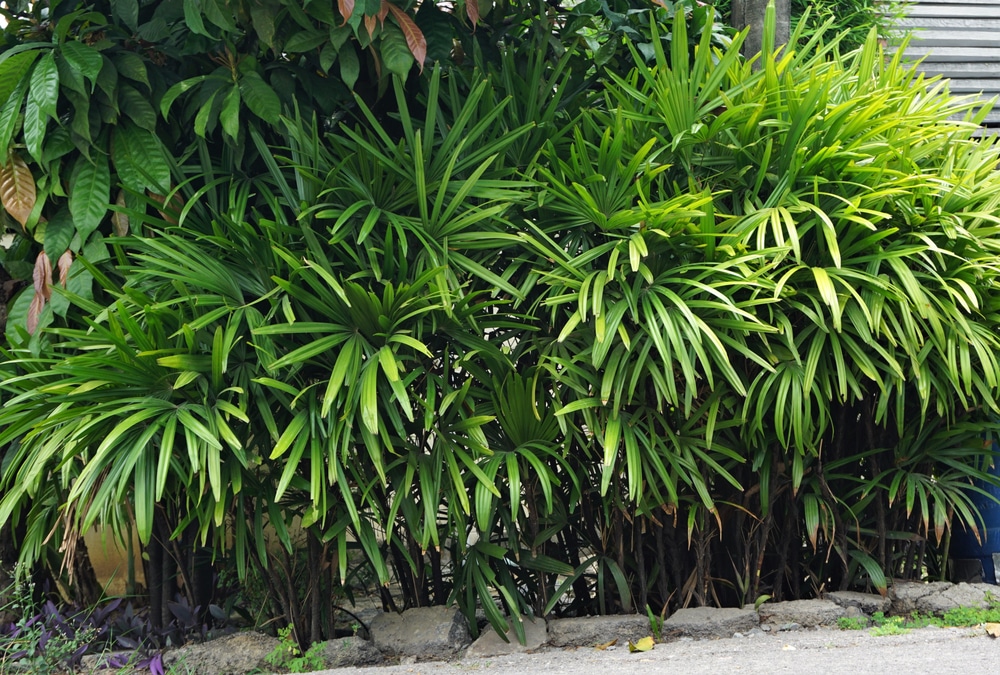The Lady Palm Tree is an elegant and regal plant that has been around for centuries. These plants have long been revered for their beauty and medicinal properties. In recent years, the Lady Palm has become a popular houseplant in the Western world, and it is easy to see why. These plants are relatively low-maintenance and can thrive in various conditions.
Its ability to purify the air and promote feelings of well-being are some of the other reasons why this plant is well-loved and sought-after. Its popularity is also due to the fact that it doesn’t require much care and can be easily propagated.
| Botanical Name | Rhapis Excelsa |
| Common Name | Lady Palm Tree |
| Plant Type | Perennial |
| Flower Color | Small, yellow, and fleshy flowers |
| Size When Mature | 36-72 Inches |
| Bloom Time | Spring |
| Sun Requirements | Full to Partial Sun |
| USDA Hardiness Zones | 8b – 11 |
| Soil PH Range | 5.5 – 7.0 |
| Soil Type | Acidic, Neutral, Well-draining |
| Water Needs | Medium |
| Native Area | China |
What You Need to Know About Lady Palm Tree
This tree is a member of the Arecaceae or Palmae family and is botanically known as Rhapis Excelsa. It is native to China and grows in the wild understory of forests. The Lady Palm can grow up to 15 feet tall in its natural habitat. Still, it is typically much smaller when grown indoors, growing to only about 3-6 feet.
These plants have long, green, and slender leaves, and they can be easily distinguished by their fan-like appearance. Additionally, its palmately compound leaves, with multiple leaflets radiating from a central point, are another identifying feature of this plant. Despite its delicate appearance, its leaves are serrated and stiff when touched.
The Lady Palm gets its name from the small, yellow, and fleshy flowers that bloom in clusters during spring. These flowers are incredibly fragrant and a favorite of bees and pollinators. After the flowers bloom, small, white, and fleshy fruits will begin to form.
This plant is incredibly popular because it is relatively low-maintenance and can tolerate many conditions. These plants are also known to be very long-lived, with some specimens living for over 100 years.
How to Care for Lady Palm Tree
Here’s everything you need to know about growing and caring for a thriving Lady Palm Tree:
Light
Sunlight is an important requirement for any plant, and the Lady Palm is no exception. These plants prefer bright, indirect light but can also tolerate low light conditions. If you live in a particularly dark home, it’ll cheerfully grow when placed in a south-facing window. If a south-facing window isn’t possible, a west-facing window will suffice.
While its cheerful foliage thrives when in direct sun, particularly during the morning, harsh afternoon rays may cause the leaves to bleach. If you’ve started noticing its leaves looking pale or yellowish, it’s a sign that it’s getting too much sun.
Move your plant to a spot with more indirect light, and make sure to monitor it closely for the next few days. You may also protect your plant by placing it in a spot with filtered light or using a sheer curtain to diffuse the light.
Water and Soil Needs
Giving your Lady Palm the proper water is crucial to its health and well-being. These plants prefer moist soil, so it is important to water them regularly. However, like what we always advise, overwatering is one of the quickest ways to kill your plant.
To avoid this, make sure to check the soil before watering it. The best way to do this is by sticking your finger about 1-2 inches into the soil. If it feels dry to the touch, then it’s okay to water your Lady Palm tree. Additionally, use lukewarm water and allow the excess to drain away.
It is also important to ensure that your plant grows in well-draining soil with a pH range of 5.5-7.0. The best way to achieve well-drained soil is to mix equal parts potting soil and sand. To improve drainage, you can also add some perlite or vermiculite to the mixture.
Temperature Requirements
The Lady Palm is a tropical plant that is hardy in USDA zones 8b-11, so it prefers warm temperatures. Therefore, these plants do best in between 60-80 degrees Fahrenheit environments, making them perfect for growing indoors.
However, if you live in a particularly cold climate, extra measures will need to be taken to ensure your plant’s survival. For instance, you may need to place it in a spot near a radiator or use a grow light to supplement the sunlight. This will help to keep the roots warm and prevent them from being damaged by the cold.
Fertilizer
The best fertilizer to use on a Lady Palm Tree is a half-strength liquid houseplant fertilizer that is applied monthly during the spring and summer. However, you should refrain from fertilizing your plant during the fall and winter because this is the plant’s natural dormancy period, and it won’t need the extra nutrients.
Common Diseases
The Lady Palm is susceptible to a few diseases, the most common of which are fusarium wilt, Ganoderma butt rot, and leaf spot.
Fusarium wilt is caused by a fungus called Fusarium oxysporum, which attacks the plant’s roots and prevents them from taking up water and nutrients. This can lead to wilting, yellowing leaves, and eventually death.
Ganoderma butt rot is another fungal disease, and it is caused by Ganoderma Zonatum. This fungus attacks the roots and the lower stem of the plant, causing them to rot. This disease can be fatal if left untreated.
Leaf spot is another fungal disease and manifests as brown or black spots on the leaves.
Keep an eye out for these diseases and treat them promptly if you notice any symptoms.
Lady Palm Tree Propagation
Reproducing Lady Palms is relatively easy and can be done through seed or division.
To propagate your plant through seed, you will need to wait until the berries on the plant have ripened and turned red. Once they are ripe, remove them from the plant and carefully peel away the fleshy outer layer to reveal the seeds. Plant the seeds in a pot filled with moist potting mix and place them in a warm, sunny spot.
Propagating by division is a bit more complicated, but it is still relatively easy. Begin by carefully removing the plant from its pot and shaking off any excess soil. Cut the root ball into two or three equal pieces using a sharp knife.
Replant each piece in its pot filled with moist potting mix and place them in a warm, sunny spot.
After following one of the two methods, keep the soil moist but not soaking wet and fertilize monthly with a half-strength liquid houseplant fertilizer. The plants should begin to grow within a few weeks.


